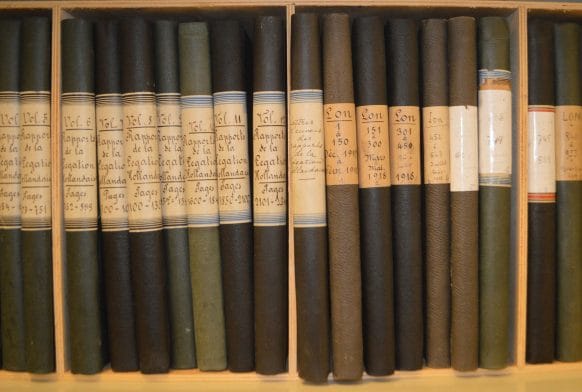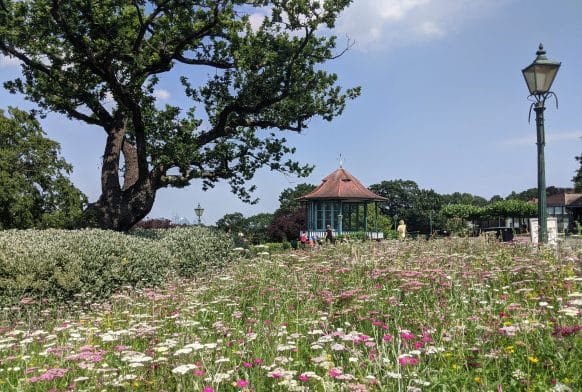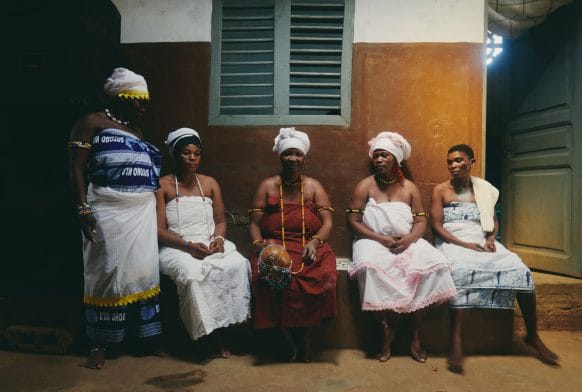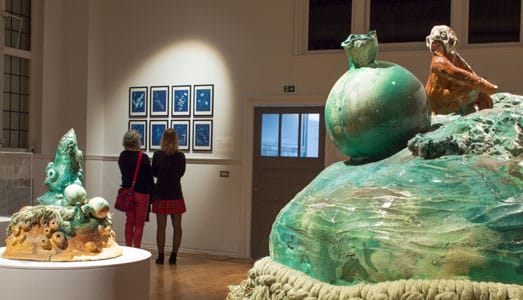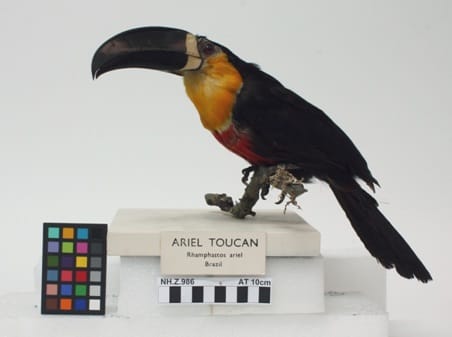Carved wooden virginal. Walnut case, painted and gilded inside the lid and with painted spruce soundboard. The carvings depict musical subjects and include the arms of William, Duke of Cleves (1516-1592). The Latin mottoes are in praise of music. The present keyboard is a dummy probably dating from the 19th century. The compass of A-f''' bears no relationship to the original which is believed to have been forty-five notes from C/E (short octave) - c"'. The instrument has survived multiple modifications and enlargements of compass, but the finely carved casework and decorated soundboard are believed to be original. The instrument is unique among surviving northern European virginals both in form and exterior decoration. It may have been made in Antwerp because the carving of the case is derived in part from prints by Jakob Floris in his Veelderhande Cierlycke compertementen, published in that city in 1564.
V&A object number: 447-1896.
The instrument has survived multiple modifications and enlargements of compass, but the finely carved casework and decorated soundboard are believed to be original. The instrument is unique among surviving northern European virginals both in form and exterior decoration. It may have been made in Antwerp because the carving of the case is derived in part from prints by Jakob Floris in his Veelderhande Cierlycke compertementen, published in that city in 1564.













